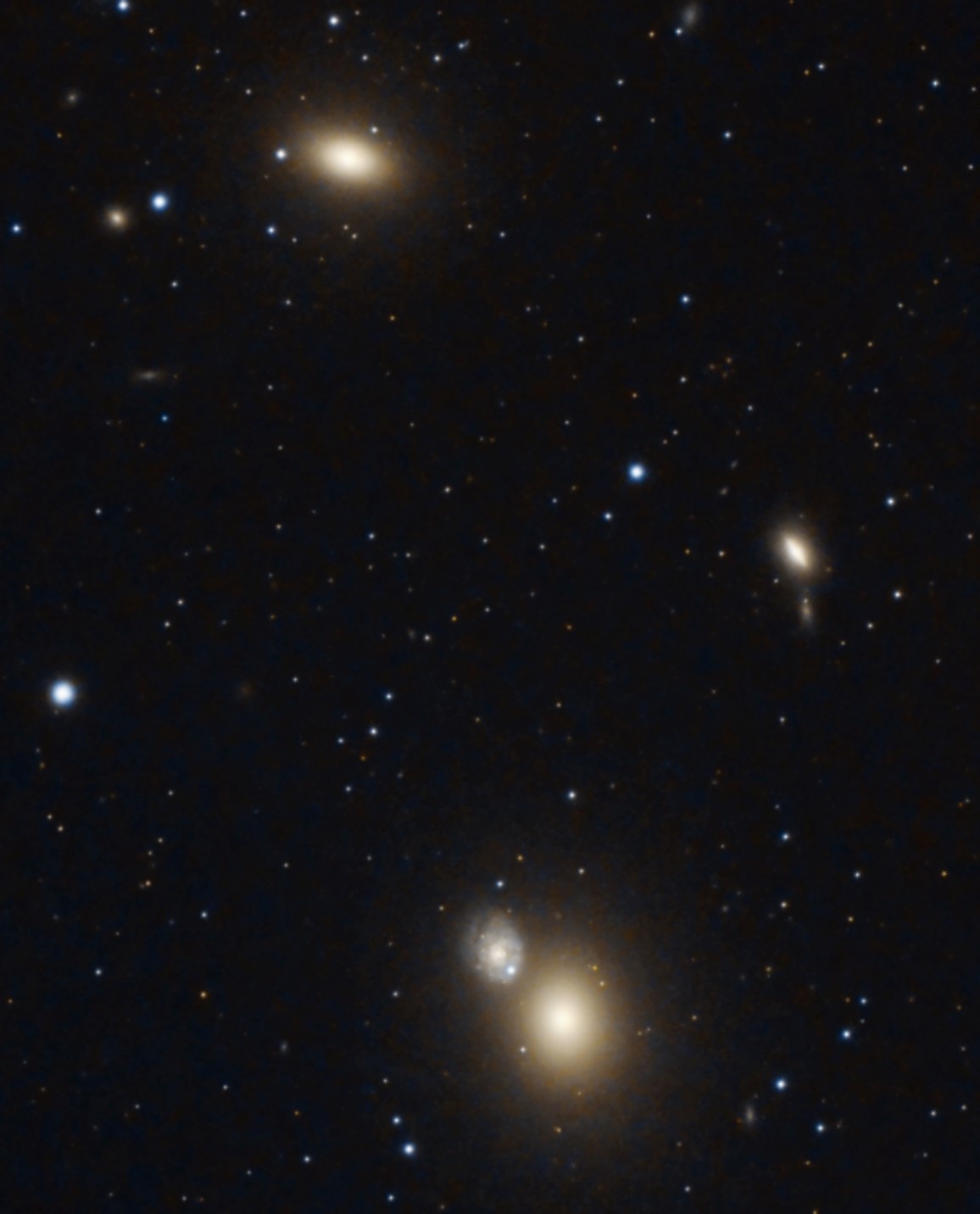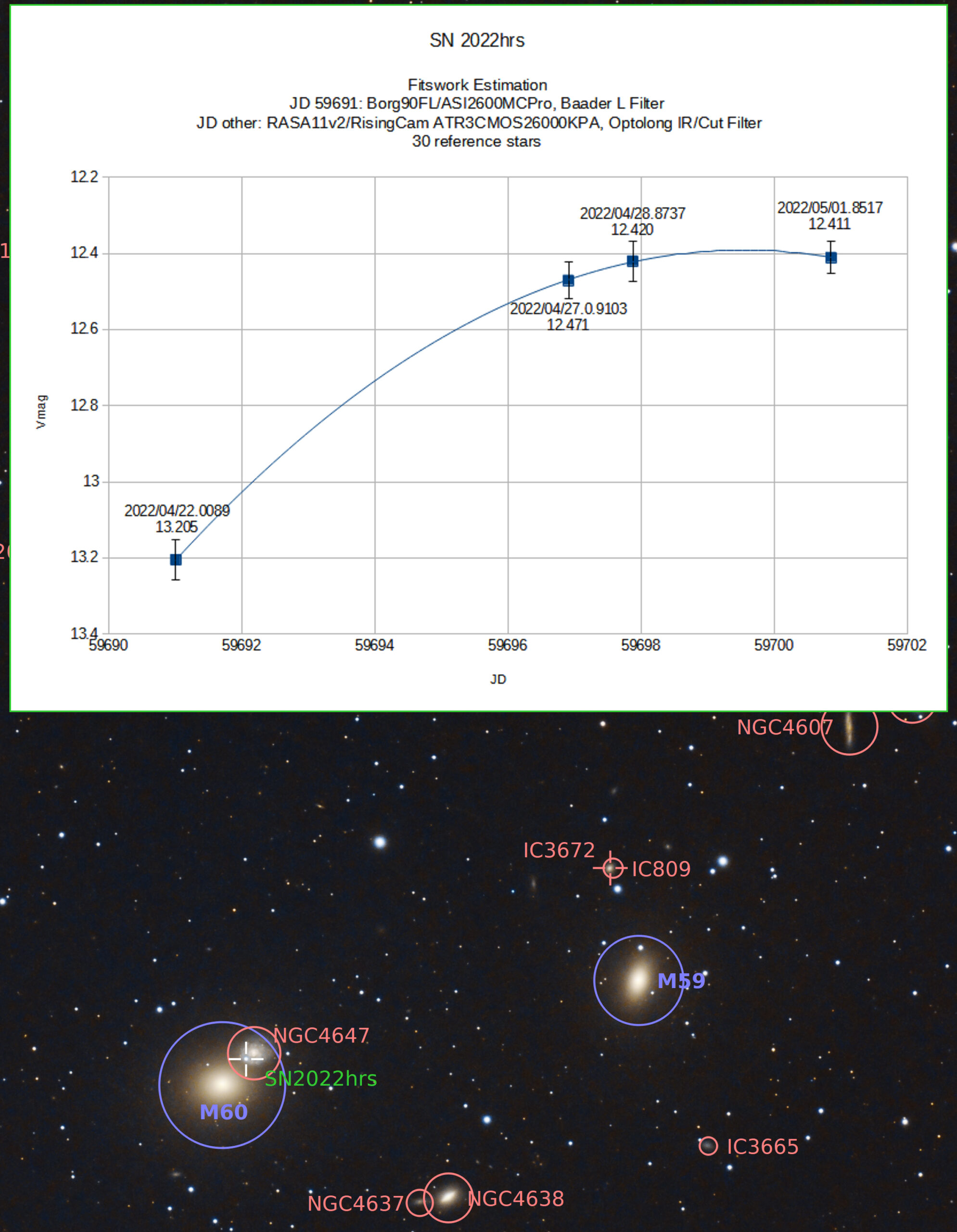 Galaxies
Galaxies
Supernova SN2022hrs

Supernova SN2022hrs in NGC 4647
On the bottom you see the large elliptical galaxy M60 and next to it NGC 4647. The supernova is the bluish bright dot in NGC 4647 at about 5 o’clock from the center of this galaxy.
Approximate magnitude reported by others was 13.0 at this time.
Date of acquisition: 2022/04/21 20:14 UTC – 2022/04/21 22:16
Borg 90FL with 1.08 flattener.
ASI2600MC Pro
Baader Luminance Filter
38×360 sec
Many high clouds passing through the field of view.
Annotated Image


Finally I measured four images from four nights and got this brightness curve.
It is not a scientific work … but it was really fun to get this plot from my data.
It shows that the brightness of the supernova probably peaked as expected on April 30th and is now slowly decaying.
This supernova is still the brightest supernova in the sky, 63 million light years away in constellation Virgo.
The supernova has currently be classified as Type Ia, which means that the progenitor was a white dwarf star in a binary system, which cannibalized its bigger companion until its mass passed the critical mass of 1.4 times the mass of our sun, also known as Chandrasekhar limit. At that moment the entire white dwarf mainly consisting of carbon and oxygen underwent a runaway nuclear reaction, which destroyed the star entirely.
The absolute maximum brightness of this type of explosions is always approximately the same. Therefore knowing its apparent brightness in the sky we can calculate the distance to the object – currently the most important tool to determine distances to galaxies at the edge of the observable universe.
First data point:
Borg 90FL
1.08 Flattener
ZWO OAG
ASI 2600MC Pro
ZWO EFW
Baader Luminance Filter
180s
Bortle 4-5
Other data points:
Celestron RASA 11 v2
Celestron CGX-L mount
RisingCam ATR3CMOS26000KPA
Optolong UV/IR Cut filter
60sec
Bortle 4-5
PixInsight
Fitswork